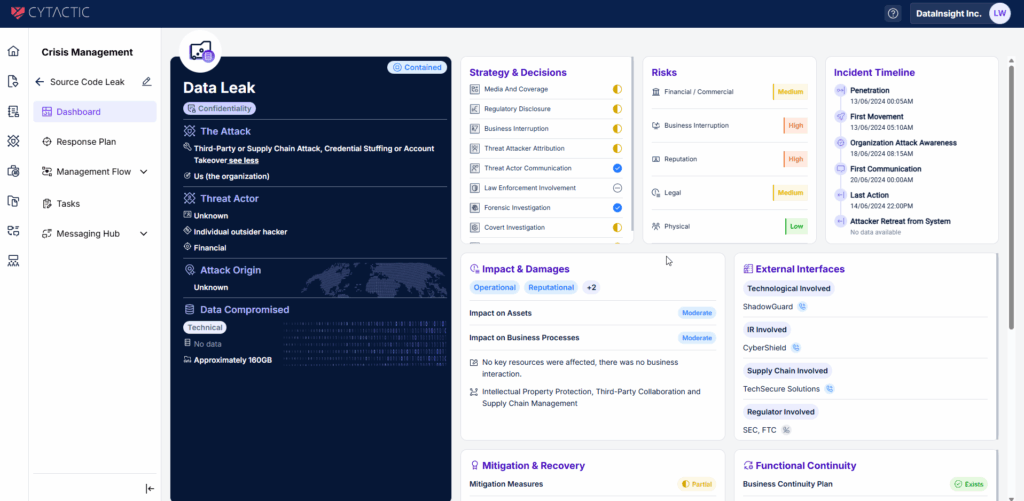Cyber threats are no longer hypothetical — they are inevitable. The only real uncertainty is when an attack will strike. In today’s rapidly evolving threat landscape, being reactive is no longer enough. The organizations that succeed in managing cyber crises are those that prepare for them before they happen.
Most companies only begin to understand what a cyber crisis truly means once they’re already in the middle of one — when systems are down, customers are panicking, and leadership is struggling to respond in real time. That’s not just reactive — it’s risky and costly.
The key to resilience lies in proactive readiness: the ability to envision the crisis in advance, anticipate its impact, and build the processes and reflexes to respond with clarity and control. It’s about changing the outcome before the crisis ever begins.
Why Being Proactive Matters
Cyber attackers today are faster, smarter, and often powered by AI. They’re constantly probing for vulnerabilities, and once they find one, they move with speed and precision. Waiting until an incident unfolds means giving the adversary a head start — and giving yourself unnecessary damage to manage.
Proactive organizations, on the other hand, don’t just wait and hope. They leverage cutting-edge technology to anticipate risks, simulate realistic scenarios, and prepare their people and processes for the moment of crisis.
That’s where Cytactic comes in.
Cytactic: Fast-Forwarding You into the Future
Cytactic’s AI-powered cyber readiness platform helps organizations meet the crisis before it arrives. It allows you to envision the crisis today, giving you deep insight into what it will demand of you tomorrow.
It’s not just about building a response plan. It’s about testing that plan under pressure. It’s about preparing the exact teams, tools, and decision-making frameworks that will define how well you respond.
Here’s how proactive readiness transforms crisis management
Threats Mapping: Understand your threat landscape by simulating real-world threat tactics relevant to your industry and infrastructure.
Clear Roles & Coordination: Assign responsibilities and build alignment across leadership, technical teams, stakeholders, and external advisors.
AI-Powered Playbooks: Generate dynamic response playbooks that combine expert-coded logic with live data and predictive insights.
Hyper-Realistic Simulations: Experience the crisis in safe, controlled environments that reflect your actual systems and workflows—so your teams are not surprised when it’s real.
From Preparedness to Action – When the breach occurs, Cytactic becomes your intelligent command center:

Live Crisis Dashboard: A real-time view of unfolding events, helping you stay oriented as the situation evolves.
Secure Out-of-Band Communication: Keep communication flowing even if your primary systems are compromised.
Orchestrated Response Workflows: AI-powered coordination across departments ensures that every action is timely and in sync.
Messaging & Disclosure Hubs: Craft and control your narrative with pre-built communication frameworks—before it spins out of control.
Changing the Outcome Starts Now
Being proactive means more than just “being ready.” It’s about shaping your organization’s muscle memory so that when the pressure is on, you respond with speed and confidence. You’re not scrambling—you’re executing.
Cytactic bridges the gap between readiness and real-time crisis management, empowering organizations to act with intention, minimize damage, and emerge stronger.
Own the future. Be proactive. Anticipate today so you can adapt tomorrow.
Cyber threats aren’t going away. But how you respond to them is entirely within your control.
With Cytactic, you’re not just preparing for the inevitable — you’re taking control of it. You’re reducing impact, protecting reputation, and ensuring that a crisis doesn’t become a catastrophe.

